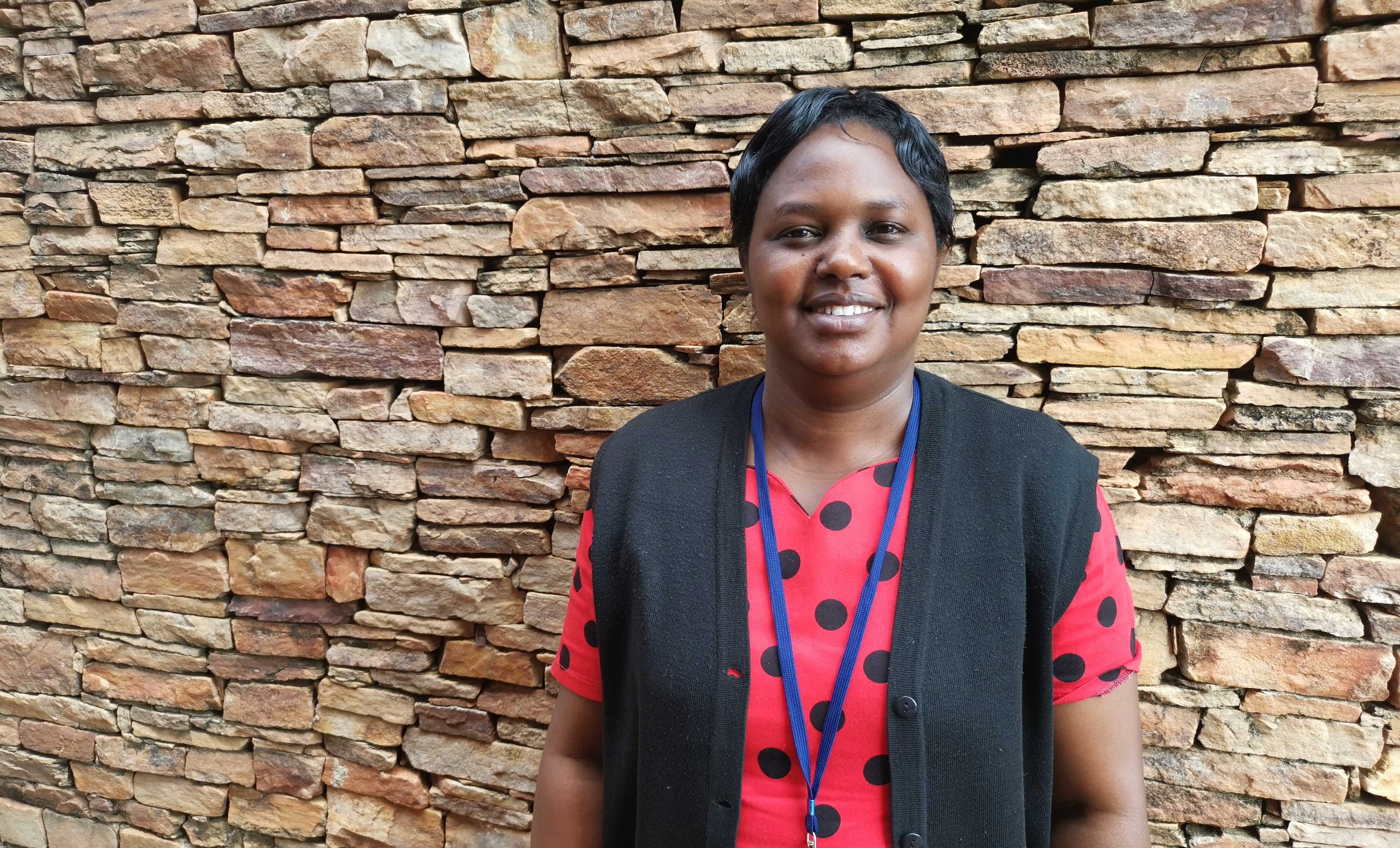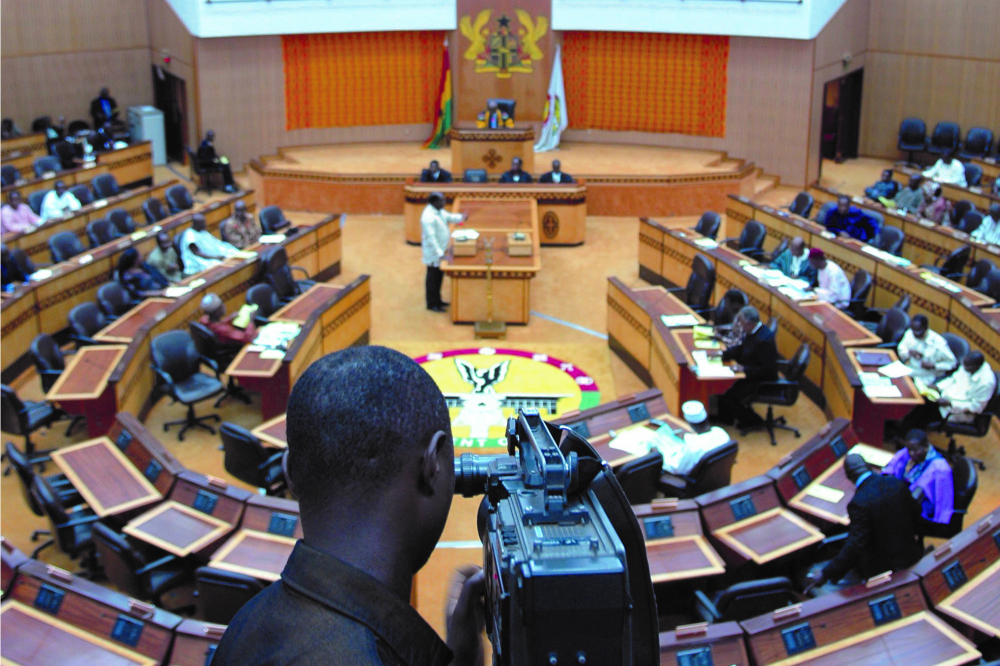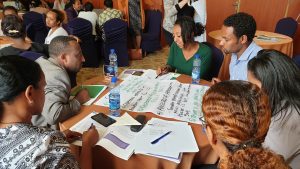
Experience of implementing course redesign to help students gain critical thinking skills
Veronica Munuve is a lecturer in the Faculty of Education at Uganda Martyrs University (UMU) and the university’s course redesign coordinator for the Transforming Education for Social Change in East Africa (TESCEA) partnership. She spoke to Tabitha Buchner about how curriculum redesign can help ensure that university students gain critical thinking skills through their studies.
The TESCEA partnership is supporting the development of critical thinking skills and problem-solving skills in students in four universities in Uganda and Tanzania. The aim is that, by the end of the three years that the project is running, the universities’ graduates will be people who think creatively and respond to issues that affect their society. One of the key elements of this work is redesigning university curricula to help lecturers ensure that each lesson is contributing to the achievement of this end goal.
In designing curricula, we usually have the conceptualization of a course, the objectives, the learning outcomes, the kind of content that we need, the methodologies we are going to use, and the assessment. But these elements together do not necessarily mean that they can deliver a graduate who, at the end of the course, will be a critical thinker or problem-solver.
Our survey of students at Uganda Martyrs University showed that students were feeling a gap between what they want and what the lecturers are doing. Courses that students perceived should be practical or hands on were largely delivered theoretically. The lecture method is employed most of the times in classrooms and the students’ role is mainly listening and notes taking. Many times, the relationship between the material treated in the classrooms and the social experience where that material is supposed to be applied is divorced. This means that achievements at university tend to remain abstract instead of being used to address social concerns. In addition, the assessment modes are very often theory oriented.
How does course redesign happen in TESCEA?
In the context of TESCEA, the design of the curriculum is helping the lecturer so that, right from the beginning, after the conceptualization, the lecturer can align the wider goals of critical thinking and problem solving with the specific learning outcomes of the course. The TESCEA approach is to redesign specific courses within the four institutions, selected from each of the year groups, with the aim of scaling this approach up across the institutions and beyond.
“[From the beginning] the lecturer can align the wider goals of critical thinking and problem solving with the specific learning outcomes of the course.”
But the benefits of thinking about course redesign go beyond the specific courses covered within the TESCEA partnership. Personally, I don’t teach courses piloted for TESCEA in Year 1, currently, but I have tried to implement the TESCEA approach in other courses that I teach in Year 1. I have revised my course outlines completely by translating the topics into concepts and designing learning outcomes that are informed by what the student will become and what lasting learning they will gain as a result of my course. I have also adopted learner-centred strategies and formative assessments.
One of the things I learnt through the TESCEA transformative learning workshop and in the first course redesign was the use of the flipped classroom, a pedagogical model in which traditional lecture and homework elements are reversed (see here for more information). This translates the classroom into a true engagement between me (the lecturer) and the students, and between students and fellow students, which is facilitated by readings done prior to the contact time. As a result, learners come to class as knowers and therefore discussion and re-evaluation of preconceived ideas are challenged with informed arguments. I am finding that these approaches are very important and I see the students are beginning to own their learning.
“I see the students are beginning to own their learning.”
How can lecturers help students embrace change?
It was not easy changing how a course is taught. Many students have expectations of a traditional process where the teacher stands in front and talks and then students take an exam at the end. This is the education system that they have gone through so far, making them think that learning is about receiving.
To help students understand the new approaches, we ensured that, at the beginning of the semester, the lecturers oriented students on what to expect in the classroom and how the courses were going to run. As the semester progressed, the students saw the importance of the new approaches because they realized they were getting equipped with new skills through their learning. They saw that the students, rather than the lecturers, were taking centre stage in the classroom.
The formal feedback has reflected this, showing that the TESCEA approach is helping students discover that they are capable of responding to issues. It is building confidence in the students and helping them see that they are part of society. They can see that it is not just the responsibility of some other person to look at the ills of the society but that they are the ones supposed to respond to those issues.
“[Students] can see that it is not just the responsibility of some other person to look at the ills of the society.”
I am also seeing students becoming more confident in giving their own ideas, discovering things by themselves and looking again at things that they took for granted. Students are also becoming critical and more capable of questioning; this comes from the kind of challenges the lecturer puts to the students and the new teaching methodologies.
As a curriculum coordinator for TESCEA at UMU, I have had time to talk to some of the lecturers and see the reactions from the students. Although at the beginning students perceived the lecturer to be transferring their work to them, they are beginning to appreciate this approach, to own learning and knowledge, and to realise that they are contributors in the creation of knowledge. Students on the redesigned courses are now seeing that they have a responsibility to challenge and put across their perspectives. That kind of confidence has grown – and it is because of the TESCEA project teaching and learning model.
***
Transforming Employability for Social Change in East Africa (TESCEA) is helping young people in Tanzania and Uganda to use their skills and ideas to tackle social and economic problems. With partners in Tanzania, Uganda and Kenya, TESCEA supports universities, industries, communities and government to work together to create an improved learning experience for students – both women and men. This improved learning experience fosters the development of critical thinking and problem-solving skills, and allows for practical learning beyond the classroom that improves a graduate’s employability.
The TESCEA partnership is led by INASP (UK), working with Mzumbe University (Tanzania), University of Dodoma (Tanzania), Gulu University (Uganda), Uganda Martyrs University (Uganda), Association for Faculty Enrichment in Learning and Teaching (Kenya), LIWA Programme Trust (Kenya) and Ashoka East Africa (Kenya).
TESCEA is funded by the UK’s Department for International Development (DFID) as part of DFID’s SPHEIR (Strategic Partnerships for Higher Education Innovation and Reform) programme to support higher education transformation in focus countries in Sub-Saharan Africa, Asia and the Middle East.
To learn more about TESCEA, click here.

 Previous Post
Previous Post Next Post
Next Post


Interesting piece.
Well said Veronica